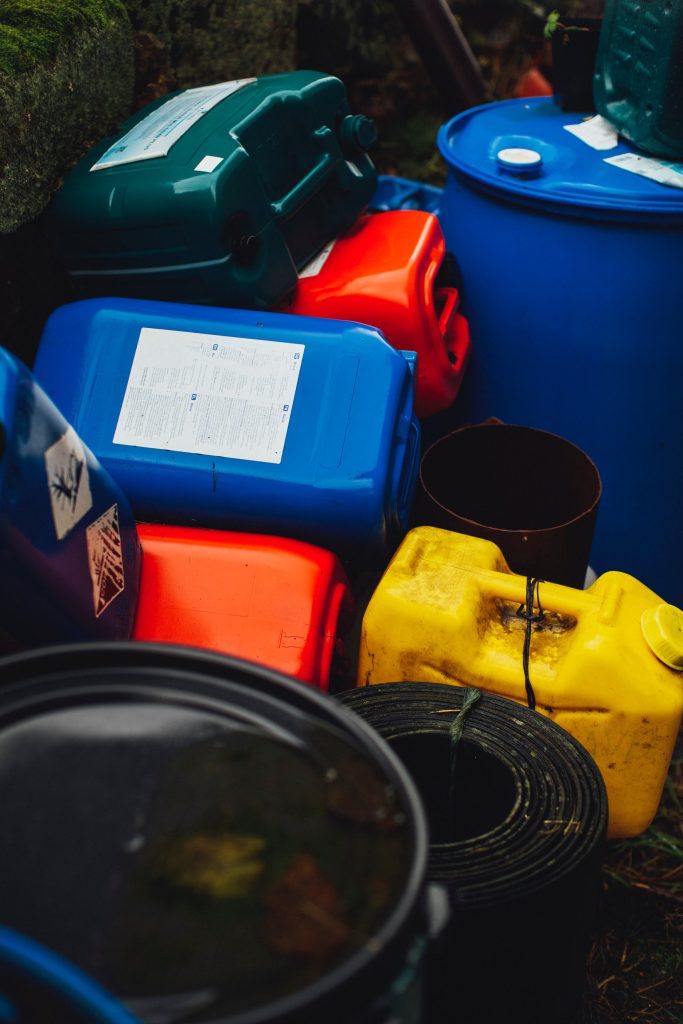In numerous industries, the presence of toxic substances poses an ongoing threat to workers’ safety and well-being. From factories to hazardous waste disposal sites, employees face the risk of exposure to harmful chemicals and materials, whether due to accidents, improper handling, or routine job duties. Such exposure can lead to severe injuries, debilitating illnesses, and long-term health complications. Moreover, the insidious nature of these substances often means that symptoms may not manifest until years after initial exposure, making it challenging for affected workers to connect their illnesses to workplace conditions.
At our firm, we stand ready to support workers who have suffered injuries or illnesses due to toxic substance exposure in the workplace. With our dedicated legal representation, we aim to hold employers accountable for maintaining safe working environments and seek the compensation necessary for medical expenses, lost wages, and other damages resulting from these hazardous conditions.
Let us help you seek justice and financial recovery so that you can focus on your health and well-being. Contact us today for a comprehensive evaluation of your case and to explore your legal options.
Free Case Evaluation
Understanding Cases Involving Injuries from Toxic Substances at Work
Classification of Toxic Materials
Below are some categories of harmful and toxic substances that workers may encounter.
- Irritants
- Asphyxiants
- Narcotics or anesthetics
- Systemic poisons
- Carcinogens
- Mutagens
- Teratogens
- Sensitizers
All of the classifications of toxic materials listed above can be dangerous. Asphyxiants, for example, deplete the supply of oxygen to body tissues; carcinogens can cause cancer; and teratogens can generate defects in the fetus of a pregnant woman.
Dangers of Toxic Materials
Toxic materials can enter the body in three ways: ingestion, absorption through the skin or eyes, and inhalation. Any time a toxic substance enters the body, a worker is at risk of harm.
Some common toxic materials that are used in the workplace are as follows.
- Methylene chloride
- Isopropyl alcohol
- Acetone
- Hydrogen peroxide
Hydrogen peroxide can be fatal if swallowed. Other toxic materials, like methylene chloride, isopropyl alcohol, and acetone are all mild nervous system depressants that may cause aspiration of the lungs if ingested. There are many other toxic substances to which workers may become exposed. Any worker who is exposed and harmed should seek medical attention right away.
Understand Workers’ Compensation in Olympia Washington State
If you’ve been exposed to toxic materials, you may qualify for benefits provided by Washington State Workers’ Compensation Law. After the exposure to the toxic substance(s), it’s important that you seek medical care immediately if it’s an emergency and report the incident to your employer as soon as possible.
If your claim for benefits is accepted, then workers’ compensation will pay for your medical care. Additionally, if the exposure to toxic materials left you with a disease or injury preventing you from returning to work, then you may qualify for compensation for a portion of your lost wages.
You can file a claim for workers’ compensation online, at your doctor’s office, or via telephone. In order to file a claim, you will have to complete required paperwork.
The paperwork will ask questions about the following and more.
- Your work history
- Your disease/illness/injury
- How the accident happened
If your paperwork is incomplete, or filed outside of the required deadline, then your claim may be denied.
For an injury, you have one year from the date that the injury occurred to file a claim; for an occupational disease (such as if a toxic substance exposure caused lung cancer), you have two years from the date of the diagnosis from a doctor to file a workers’ compensation claim. If your claim is denied, you have the right to appeal the decision.
Case Results
$4,255,555
Neglect, drowning, and cognitive impairment of a vulnerable adult under DSHS care and supervision.
$2,816,040
Catastrophic career ending injury claim in Grays Harbor County.
$2,501,808
Career ending injury and infection claim in King County.
Our Approach to Cases Involving Injuries from Toxic Substances at Work
At Ron Meyers & Associates PLLC, we understand the critical importance of handling cases involving injuries from toxic substances at work with compassion, expertise, and a commitment to justice. Our approach is centered around providing unwavering support to workers who have suffered harm due to exposure to hazardous materials in the workplace. Here’s how we strive to protect our clients’ rights and seek the compensation they deserve:
- Comprehensive Legal Expertise: Our team of experienced attorneys possesses in-depth knowledge of workers’ compensation laws and regulations in Washington State. We have a proven track record of successfully handling cases involving injuries from toxic substances, allowing us to navigate the complexities of these claims with confidence.
- Personalized Attention: We recognize that each case is unique, and every injured worker deserves individualized attention. When you choose Ron Meyers & Associates, you can expect to work with a dedicated attorney who will listen to your concerns, answer your questions, and guide you through the entire legal process.
- Advocacy for Your Rights: We are passionate advocates for the rights of workers who have been harmed by toxic substances in the workplace. Our goal is to ensure that you receive fair compensation for your injuries, medical expenses, and lost wages. We will fight tirelessly to protect your rights and hold responsible parties accountable.
- Thorough Case Evaluation: When you come to us with your case, we conduct a thorough evaluation to understand the circumstances surrounding your toxic substance exposure. This evaluation enables us to build a compelling case and determine the most appropriate legal strategies for seeking the compensation you deserve.
- Guidance Throughout the Process: Navigating workers’ compensation claims can be complex and overwhelming, especially when dealing with injuries from toxic substances. We are here to guide you through every step of the process, explaining your rights, obligations, and options along the way.
- Seeking Maximum Compensation: Our priority is to secure the maximum compensation possible for your injuries and losses. We take into account not only the immediate medical expenses but also the potential long-term impact on your health and ability to work.
- Communication and Transparency: We believe in open and transparent communication with our clients. You can expect regular updates on the progress of your case, and we are always available to address any concerns or questions you may have.
- Timely Action: Toxic substance exposure cases have specific deadlines for filing claims. We take prompt action to ensure that all necessary paperwork is filed within the required timeframes to avoid potential claim denials.
Our mission is to provide you with the legal representation you need to navigate the challenges posed by injuries from toxic substances at work. We strive to secure the compensation you deserve while supporting your physical and emotional recovery. If you or a loved one has suffered harm due to toxic substances in the workplace, don’t hesitate to reach out to Ron Meyers & Associates PLLC. Let us be your advocates, fighting relentlessly to protect your rights and help you move forward after this challenging experience.
How Ron Meyers & Associates Can Help with Cases Involving Injuries from Toxic Substances at Work
Get Legal Help from Ron Meyers & Associates Today!
If you need to file a claim for workers’ compensation benefits following exposure to a toxic substance while on the job, an attorney can help you to get started. With a thorough understanding of workers’ compensation laws, the attorneys at Ron Meyers & Associates PLLC know what it takes to make sure you get the benefits to which you’re entitled. If you need help filing a claim or appealing a denied claim, contact our offices now at 844-920-2438.
Frequently Asked Questions About Cases Involving Injuries from Toxic Substances at Work
If you have been exposed to toxic substances while at work and have experienced an injury or illness, it’s crucial to seek medical attention immediately, especially in cases of emergency. Report the incident to your employer as soon as possible, as this is essential for documenting the workplace injury or illness.
Yes, if you have been exposed to toxic substances while on the job and have sustained an injury or developed an illness as a result, you may be eligible for workers’ compensation benefits in Washington State. These benefits can cover your medical care expenses and, if your exposure resulted in a disease or injury preventing you from returning to work, you may also qualify for compensation for a portion of your lost wages.
To file a workers’ compensation claim for toxic substance exposure, you can do so online, at your doctor’s office, or via telephone. You will need to complete the required paperwork, which typically includes information about your work history, the disease or injury you suffered, and details about the accident or incident leading to the exposure.
Yes, there are specific time limits for filing workers’ compensation claims in Washington State. For injuries, you have one year from the date the injury occurred to file a claim. If you are dealing with an occupational disease resulting from toxic substance exposure, such as lung cancer, you have two years from the date of diagnosis by a doctor to file the workers’ compensation claim.
If your workers’ compensation claim is denied, you have the right to appeal the decision. It’s essential to consult with an experienced attorney promptly to assess the reason for the denial and gather the necessary evidence to support your appeal.
An experienced workers’ compensation attorney can be instrumental in helping you navigate the complexities of toxic substance exposure claims. They will ensure that your claim is filed correctly and within the required deadlines, gather relevant evidence, negotiate with insurance companies, and represent your interests during the appeals process if needed.
If you have developed a chronic illness as a result of toxic substance exposure at work, you may be entitled to workers’ compensation benefits. Chronic illnesses often require ongoing medical care, and a skilled attorney can help you pursue fair compensation for medical expenses and lost wages related to your condition.















